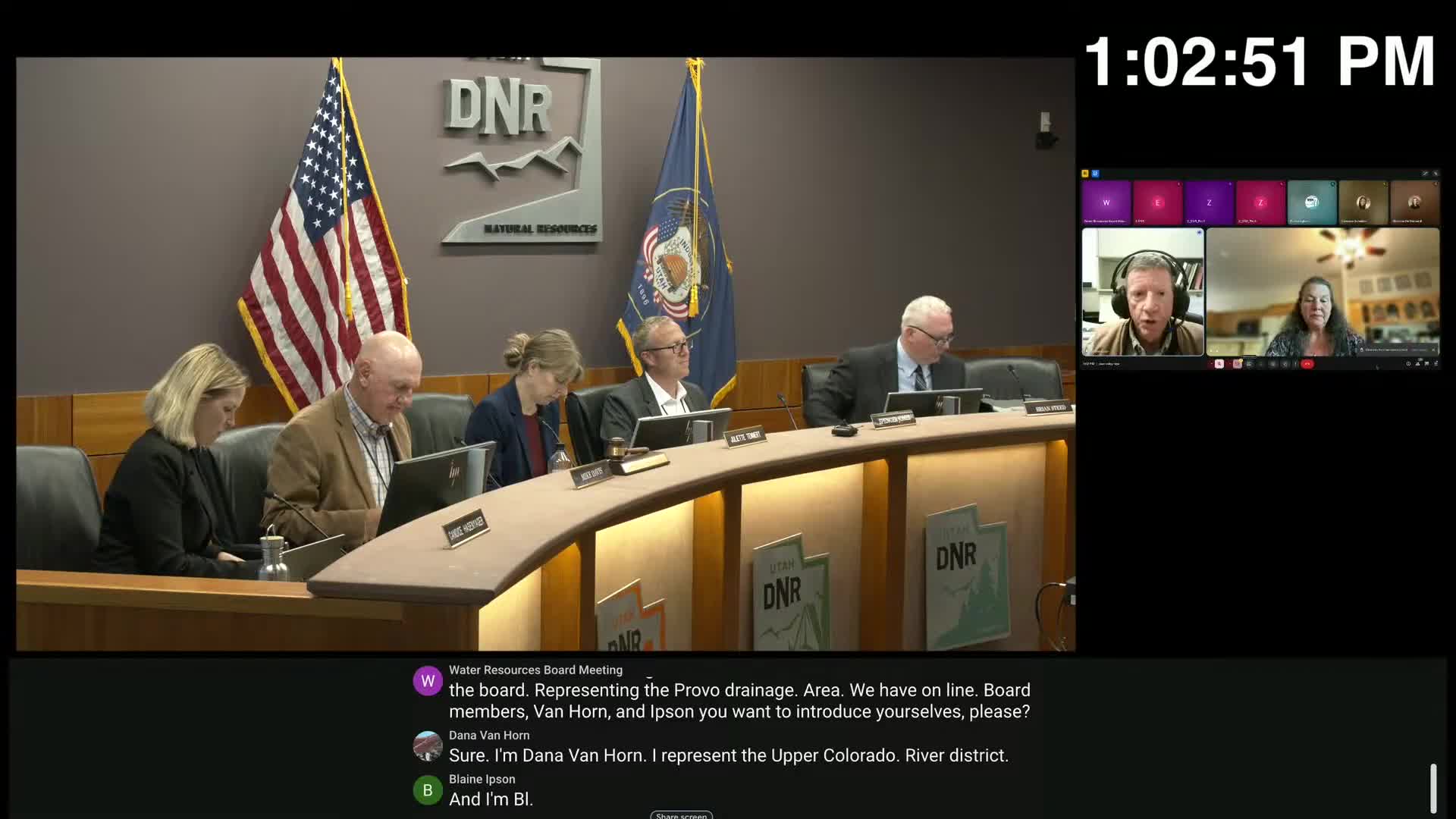Washington County Water Conservancy District unveils ambitious water reuse project plans
June 27, 2025 | Natural Resources Department, Utah Environment, State Agencies, Organizations, Utah Executive Branch, Utah
This article was created by AI summarizing key points discussed. AI makes mistakes, so for full details and context, please refer to the video of the full meeting. Please report any errors so we can fix them. Report an error »

In a pivotal meeting held on June 26, 2025, the Utah Water Resources Board convened to address pressing water management issues, particularly focusing on the Washington County Water Conservancy District's ambitious plans to enhance water supply and infrastructure. As representatives gathered under the bright lights of the conference room, the urgency of the discussions reflected the growing water demands in one of the state's fastest-growing regions.
Director Hassnjager opened the meeting by introducing key staff members and acknowledging the quorum necessary for conducting business. The board swiftly moved to approve the minutes from the previous meeting, demonstrating a commitment to efficiency in tackling the agenda ahead.
The spotlight soon turned to Tom Cox, the project manager for Washington County Water Conservancy District, who outlined the district's extensive water management strategy. Established in 1962, the district is responsible for conserving and managing water supplies primarily sourced from the Virgin River and other groundwater sources. Last year alone, it delivered approximately 52,000 acre-feet of water to various entities within the county, underscoring its critical role in regional water distribution.
Cox detailed a comprehensive 20-year plan aimed at meeting the increasing water demands driven by rapid population growth. This plan encompasses a variety of strategies, including water conservation, local supply development, and the optimization of groundwater resources. Notably, the district is also exploring the use of treated wastewater for irrigation and potentially for drinking water, a move that could significantly enhance water availability in the area.
The proposed project is ambitious, involving over 60 miles of new pipelines, three reservoirs, and advanced water purification facilities. These developments are designed to facilitate the reuse of water for agricultural and secondary irrigation purposes, with the potential for further treatment to meet drinking water standards. The board members listened intently as Cox presented maps detailing the locations of major facilities, including the Chief Torker Dam and the Confluence Park Water Reclamation facility.
As the meeting progressed, the discussions highlighted the importance of innovative water management solutions in the face of growing demand and environmental challenges. The board's commitment to supporting such initiatives reflects a proactive approach to ensuring sustainable water resources for Utah's future.
With the approval of the feasibility reports and the ongoing collaboration among various stakeholders, the path forward appears promising. The board's efforts to enhance water infrastructure not only aim to meet current needs but also to secure a resilient water supply for generations to come. As the meeting concluded, the sense of urgency and responsibility lingered in the air, reminding all present of the vital role water plays in the lives of Utah residents.
Director Hassnjager opened the meeting by introducing key staff members and acknowledging the quorum necessary for conducting business. The board swiftly moved to approve the minutes from the previous meeting, demonstrating a commitment to efficiency in tackling the agenda ahead.
The spotlight soon turned to Tom Cox, the project manager for Washington County Water Conservancy District, who outlined the district's extensive water management strategy. Established in 1962, the district is responsible for conserving and managing water supplies primarily sourced from the Virgin River and other groundwater sources. Last year alone, it delivered approximately 52,000 acre-feet of water to various entities within the county, underscoring its critical role in regional water distribution.
Cox detailed a comprehensive 20-year plan aimed at meeting the increasing water demands driven by rapid population growth. This plan encompasses a variety of strategies, including water conservation, local supply development, and the optimization of groundwater resources. Notably, the district is also exploring the use of treated wastewater for irrigation and potentially for drinking water, a move that could significantly enhance water availability in the area.
The proposed project is ambitious, involving over 60 miles of new pipelines, three reservoirs, and advanced water purification facilities. These developments are designed to facilitate the reuse of water for agricultural and secondary irrigation purposes, with the potential for further treatment to meet drinking water standards. The board members listened intently as Cox presented maps detailing the locations of major facilities, including the Chief Torker Dam and the Confluence Park Water Reclamation facility.
As the meeting progressed, the discussions highlighted the importance of innovative water management solutions in the face of growing demand and environmental challenges. The board's commitment to supporting such initiatives reflects a proactive approach to ensuring sustainable water resources for Utah's future.
With the approval of the feasibility reports and the ongoing collaboration among various stakeholders, the path forward appears promising. The board's efforts to enhance water infrastructure not only aim to meet current needs but also to secure a resilient water supply for generations to come. As the meeting concluded, the sense of urgency and responsibility lingered in the air, reminding all present of the vital role water plays in the lives of Utah residents.
View full meeting
This article is based on a recent meeting—watch the full video and explore the complete transcript for deeper insights into the discussion.
View full meeting

